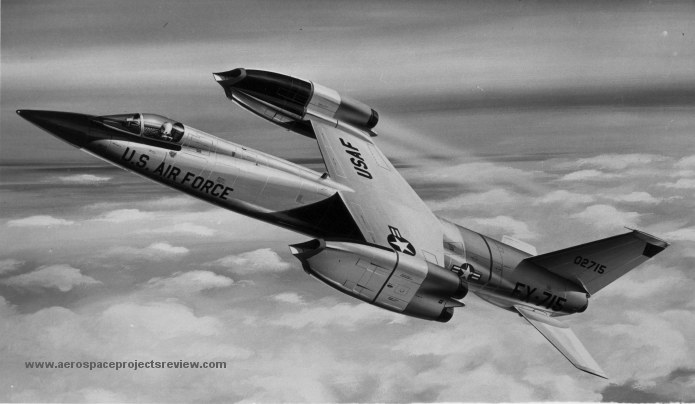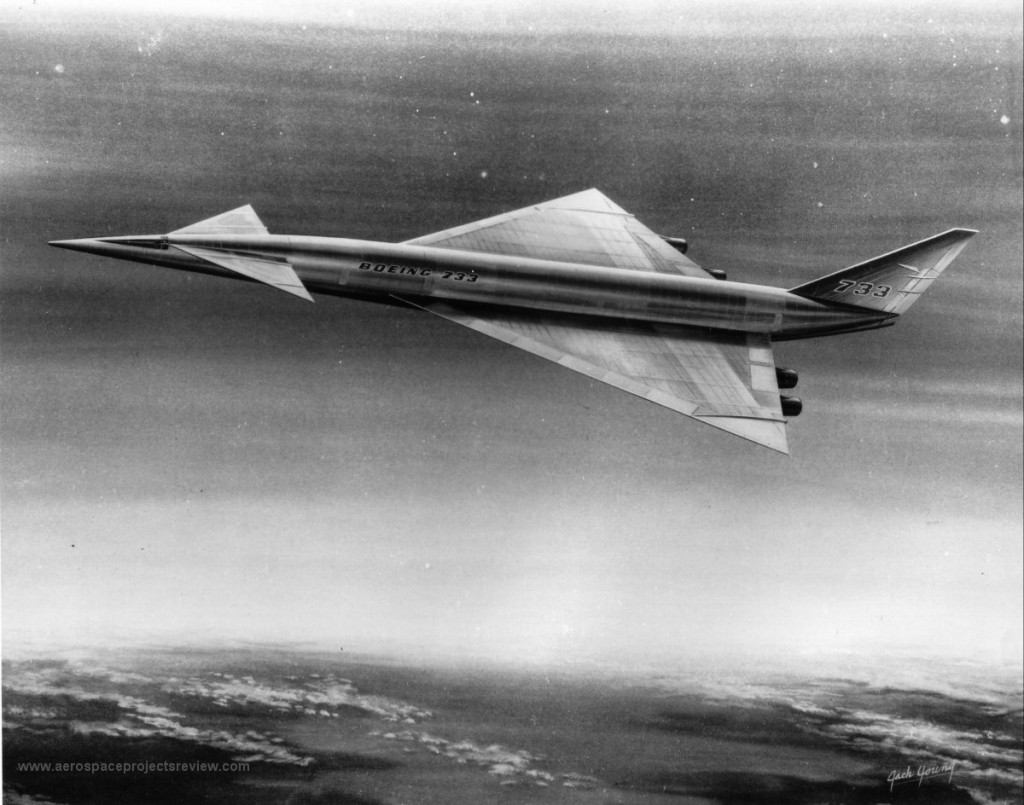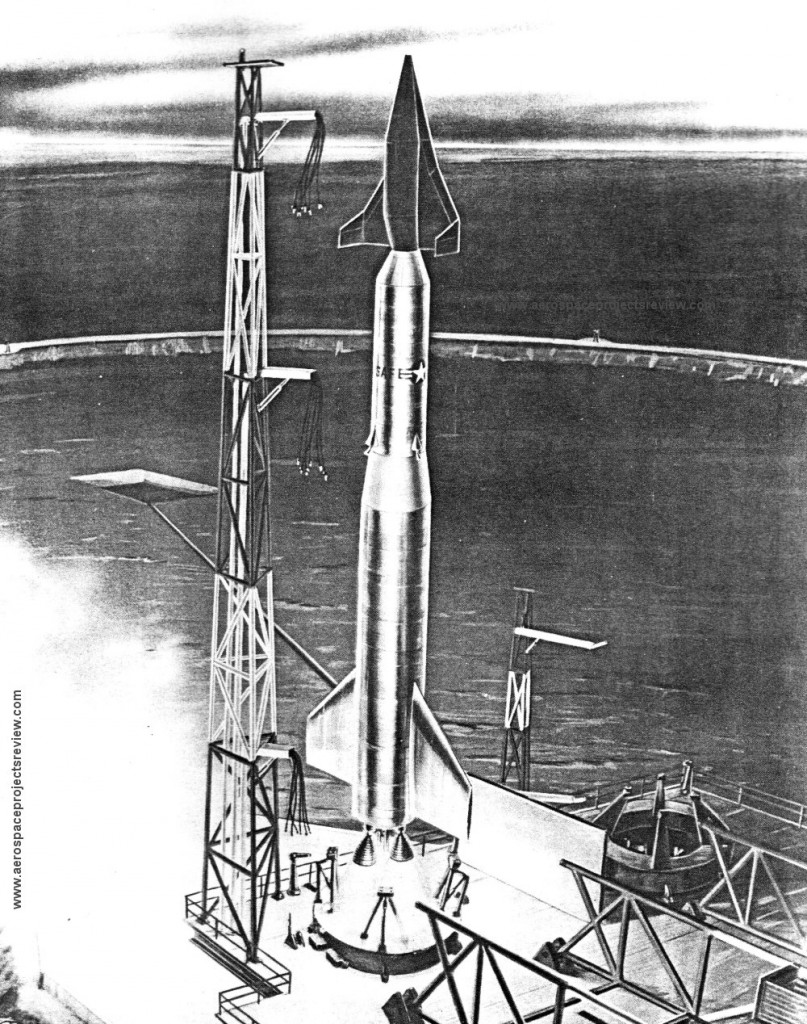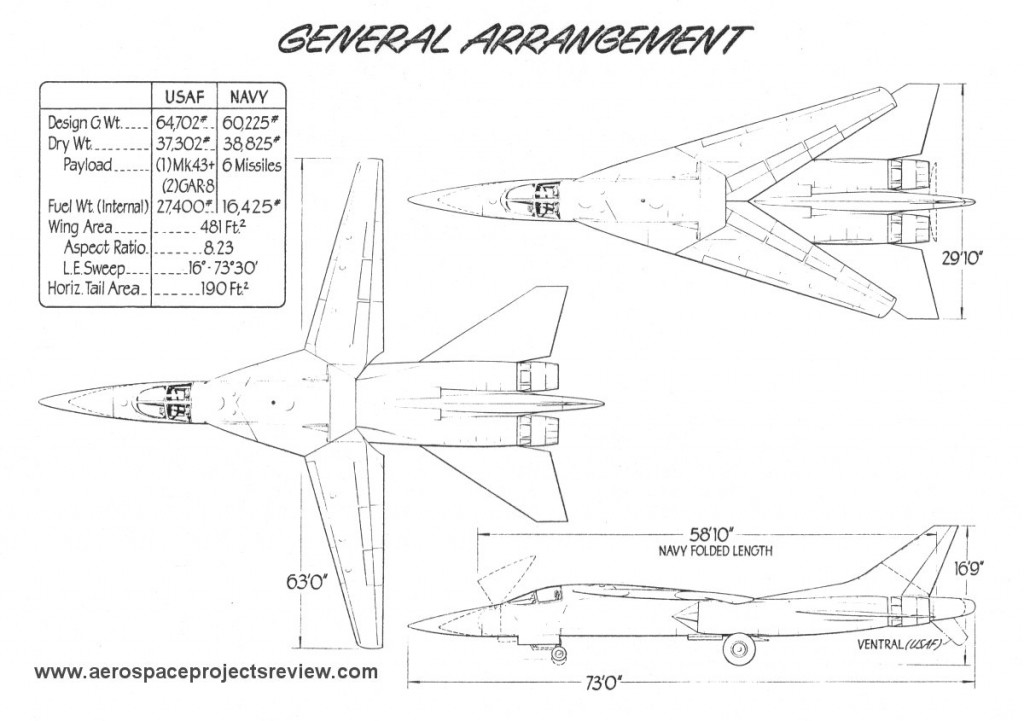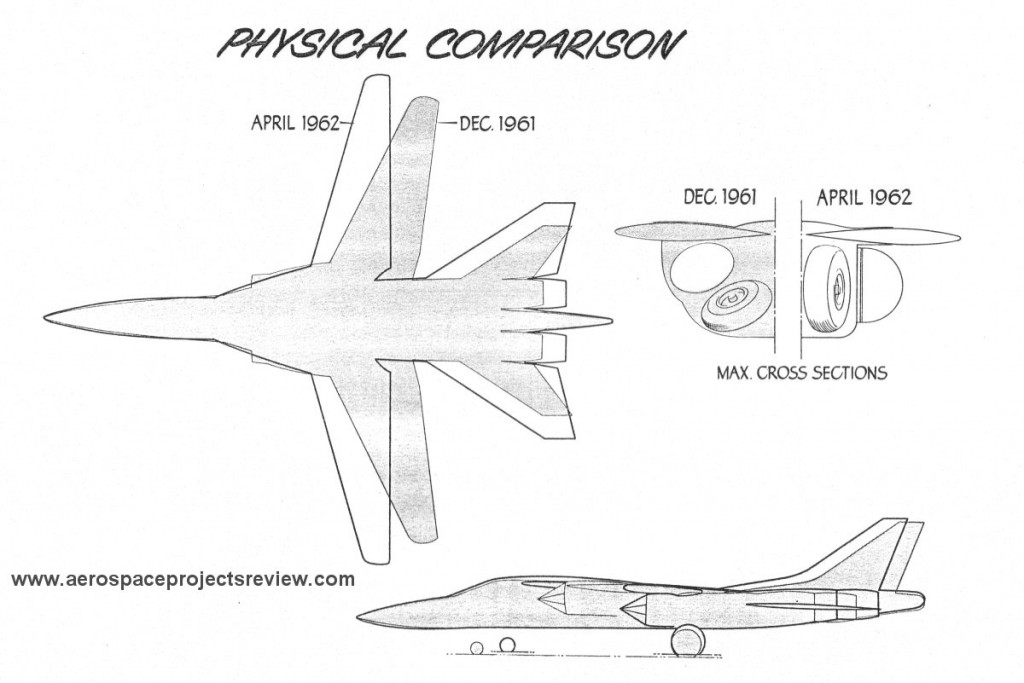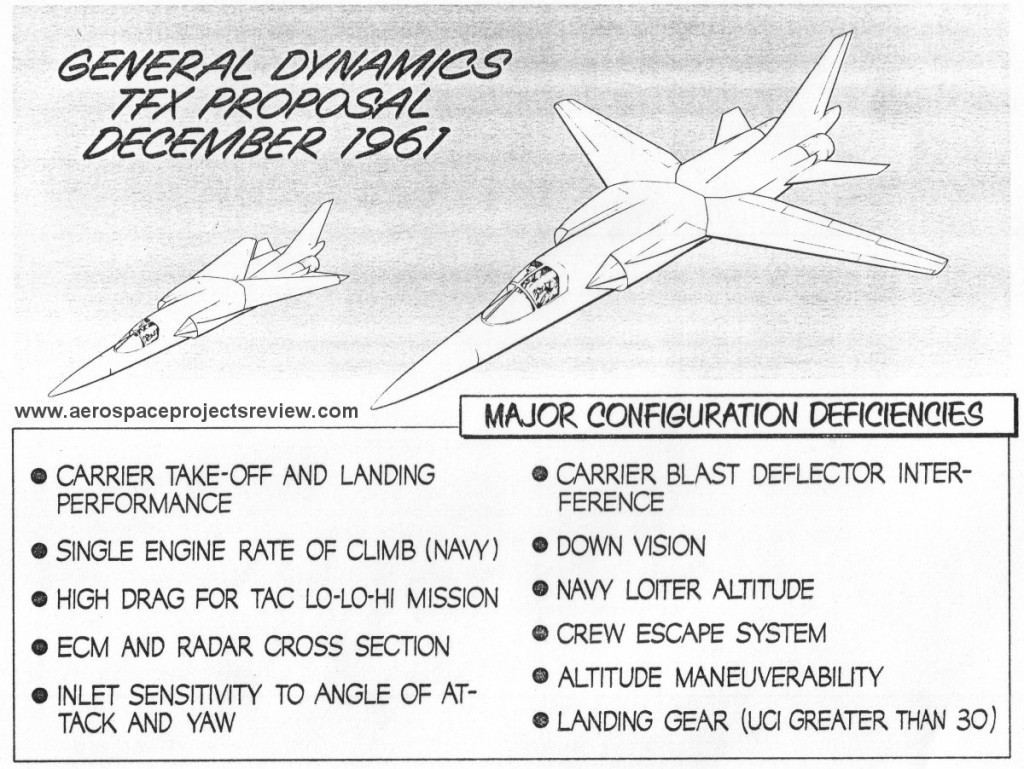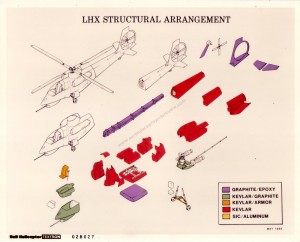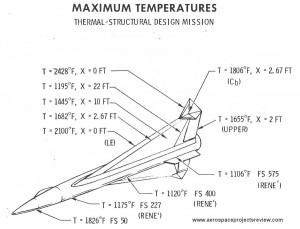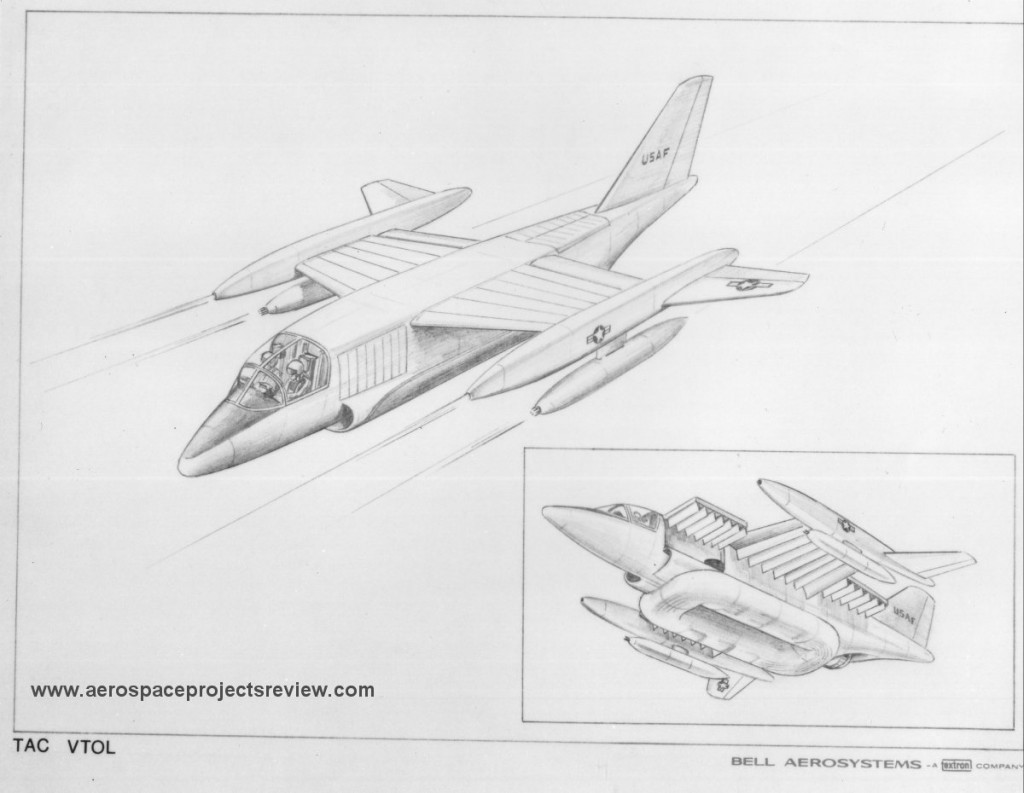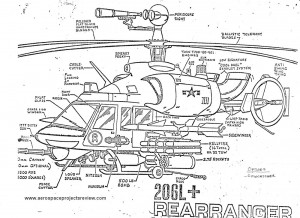A Bell Aircraft illustration of the D188A VTOL strike fighter. This design was described in detail in Article 34, available for both download and printed.
You can download a 5.5 megabyte version of this diagram; the link is HERE. To access it, you will need to enter a username and password. The username: the first word in the body of the text on page 6 of APR issue V1N4. The password: the first word in the body of the text on page 14 of the same issue. Note that both are case sensitive.
